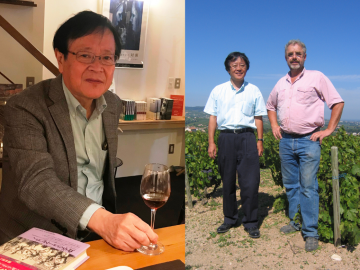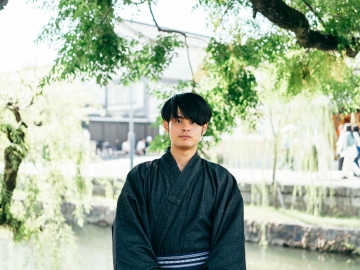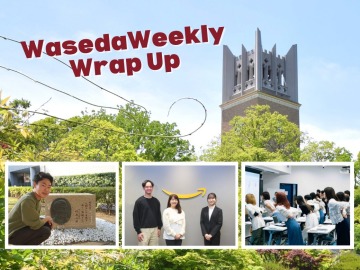Understanding 19th Century Finland from Historical Sources From Sweden to Russia: Thinking About “Nation” in Finland

In the reoccurring corner “Graduate Student’s Research”, Waseda Weekly highlights the research of current Waseda graduate students. For this article, Maiko Yoshida, a third-year doctoral student in the Graduate School of Letters, Arts, and Sciences, wrote about her experience studying Finnish history. She began her article noting that when people think of Finland, they probably imagine saunas, the design house Marimekko, and, of course, the magical character Moomin. Many people may not realize, though, that Moomin was originally written in Swedish. Actually, Finland has two national languages: Finnish and Swedish.
Even after Finland was incorporated into the Russian Empire in 1809, Swedish remained the language of the government and education. That is why, even though many people spoke Finnish, those who went on to higher education and became officials or teachers spoke Swedish. Gradually, however, the Swedish-speaking intellectuals began expressing the idea of a “Finnish nation” which was based on the Finnish language. Opposition arose alongside varying conceptions of a “Finnish nation” amongst the intellectuals. Maiko wrote that her goal is to shed light on their discussions while not only noting the changes to Finnish society but also the changes in the Russian Empire as a whole. To move closer to achieving this goal, she needed to learn both Finnish and Swedish and with support from the Ministry of Education, Culture, Sports, Science and Technology’s “Tobitate! Study Abroad Initiative” she studied abroad at Finland’s University of Helsinki.
Japanese article:19世紀のフィンランドを史料から読み解く【文学研究科】
At Least a Bottle A Night: Pairing Natural Wine with Food to Enjoy with my Wife

Waseda Weekly asked Professor Ikuhiro Fukuda of the Faculty of Education and Integrated Arts and Sciences to write about wine for the reoccurring column “Professor’s Time Off”. Professor Fukuda is a self-professed wine lover and has translated history books about wine and even written about wine himself. He traces his love of wine back to the three years he spent as a graduate student studying abroad in France. He shared how the glutton in him felt at home in France when he saw people consuming food and drink as an important means to enjoy their lives.
Later, Professor Fukuda began to analyze the eating and drinking scenes in French literature, and he was surprised by the abundance and richness of the depictions. He expanded his analysis to include Japanese literature and found that the symbolic representations of food and drink were different from those found in French literature. He then made thinking about the history and culture of food and drink his full-time job and took the liberty of naming his specialty “Food and Drink Representation Theory.”
Professor Fukuda’s wife is also a Waseda graduate and in their free time they enjoy discussing which wine to choose for dinner each night from the over 220 they store in their wine refrigerator at home. For the past few years, Professor Fukuda has been drinking natural wine with his wife. He introduced the shop 3amours in Ebisu for cheap, delicious natural wine. Professor Fukuda also recommended four wines that are all in the 2000-yen range and available to buy at the shop. They are Domaine de Montgilet’s Sauvignon Blanc 2022, Domaine de Montgilet’s Grolleau 2021, Mas Oliver’s Cava Chamcalet But, and Bonne Peche’s Bonne Peche Rosé.
Japanese article:毎晩最低1本 妻と楽しむ自然派ワインと食事のマリアージュ
An Elegant Cityscape You Can Enjoy in Kimono: Kurashiki Bikan Historical Quarter in Okayama Prefecture

Naotaka Horita, a master’s student in the Graduate School of Law’s yearlong Waseda LL.M program, wrote this article for the Waseda Weekly “Ambassador of Hometown” series. He began by describing an area where you can experience the extraordinary, a town that hasn’t changed since ancient times. That place is the Kurashiki Bikan Historical Quarter, Naotaka’s favorite area in Okayama Prefecture, where he was born. In the past people gathered here and the land flourished under the direct control of the Edo Shogunate. Even now you can still taste the history.
River boats float along the Kurashiki River as it flows from the Kurashiki Bikan Historical Quarter to Lake Kojima. Many old buildings also remain in the area. The buildings use a traditional wall painting style called namako, which plays an important role in adding color to the beautiful Kurashiki landscape. The Former Inoue Family Residence, which the government of Japan designated an Important Cultural Property, is located along the main street in the middle of Kurashiki. The interior has been beautifully preserved so you can imagine what it was like back then. Behind is Achi Shrine. After climbing more than 180 stone steps you can reach the shrine located on Mt. Tsurugata. There is a panoramic view of Kurashiki from the grounds and Naotaka often visited as a junior and high school student when he wanted a break.
Finally, Naotaka introduced his favorite scene: the Kurashiki Bikan Historical Quarter at sunset. As the sun goes down, the street lamps begin to light up and emit a soft glow, illuminating the buildings in the Bikan Historical Quarter, and the rows of small restaurants raise their noren curtains, creating a peaceful time where you can forget your noisy daily life. Naotaka ended his article by expressing the nostalgia he feels each time he returns to the Kurashiki Bikan Historical Quarter and invited the readers to visit.
Japanese article:着物を着て歩く風情豊かな街並み 岡山県・倉敷美観地区







